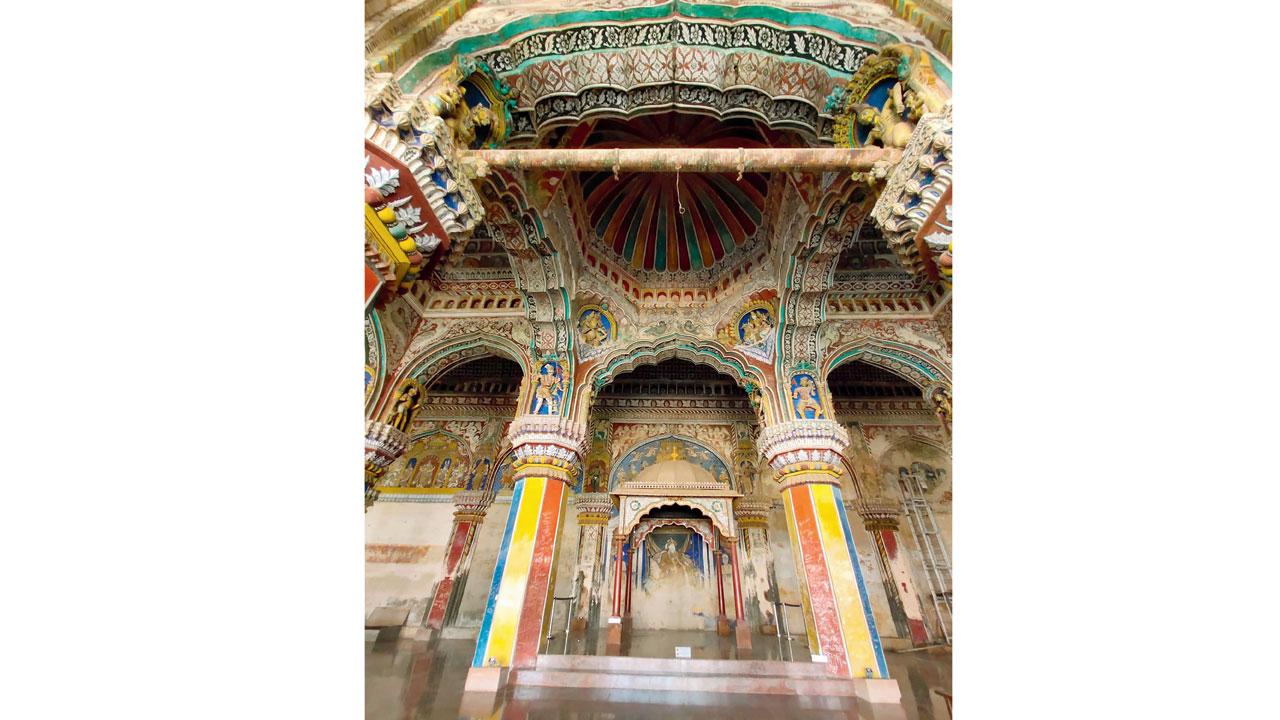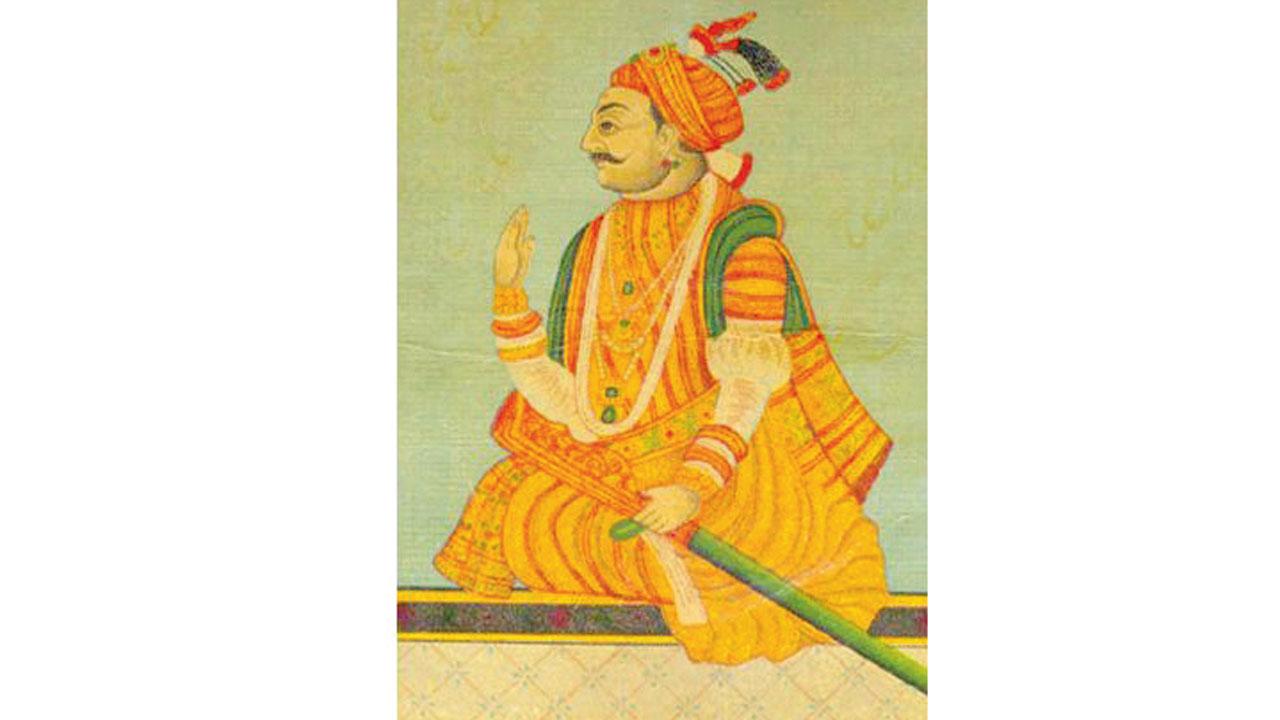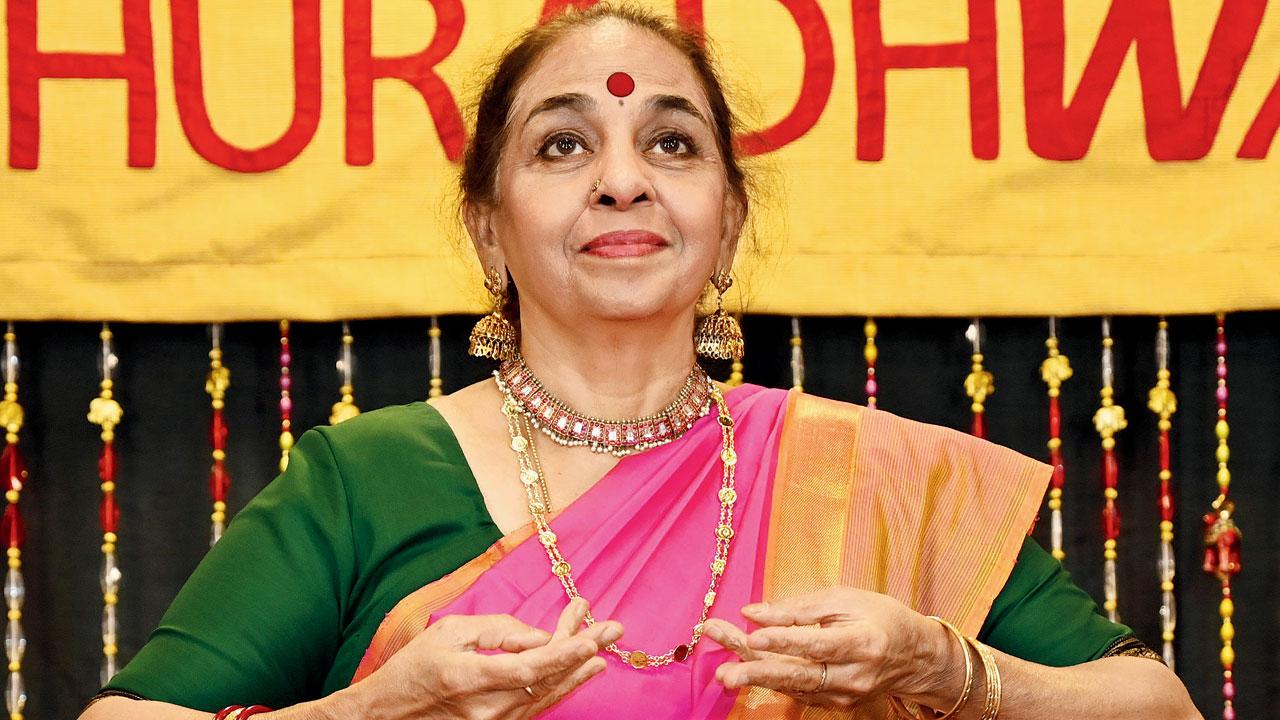A Bharatanatyam artiste-scholar will shed light on the lesser-known cultural legacy of the Maratha kings of Thanjavur in an upcoming performance

A Bhagavata Mela performance of Sakuntalnatak produced and co-directed by Raman
They paved the way for the illustrious Marathi theatre tradition, encouraged and uplifted art, music, poetry, literature and dance, and created a syncretic cultural legacy that drew from Maharashtra and Thanjavur. Yet, the Maratha kings of Tanjore or Thanjavur, who ruled from 1676 to 1855, barely find a mention in mainstream history books. Bharatanatyam artiste, writer and scholar Indumati Raman looks back on their rule as the “golden era” for the arts. In an upcoming lecture-cum-performance, the 74-year-old will delve into the forgotten history of the Maratha kings of Tanjore, through an immersive abhinaya of extracts of Marathi Yakśagānams, along with music and dance.
ADVERTISEMENT

Durbar Hall, Maratha Palace, Thanjavur. Pic Courtesy/Fiona Fernandez
Raman is a Kalakshetra-trained Bharatanatyam exponent, who was the patron, sponsor and chairperson of the Melattur Bhagavata Mela Natya Vidya Sangam from 1993 to 2002. Bhagavata Mela is an ancient theatrical tradition performed by priests in Thanjavur. Yakśagānam, Raman decodes, is a script for presenting a story. Woven with poems, humour, speeches and dialogues, it is generally multilingual, and was performed by Bhagavata Mela artistes. “Two to three centuries ago, these artistes would enact Marathi Yakśagānam plays, which were first written by Maratha king Vyankoji Raje Bhosale’s son, Shahaji II,” Raman reveals. King Vyankoji, she explains, was the other son of King Shahaji Bhosale — the father of Chhatrapati Shivaji Maharaj and his elder brother, Sambhaji Shahaji Bhosale — from his wife Tuka bai. It was Vyankoji who established the Maratha reign in Thanjavur, where they ruled till 1855.

Shahaji II. Pic Courtesy/Prince Pratap Sinh Serfoji RajeBhosle
While working with the Melattur Bhagavata Mela Natya Vidya Sangam artistes, Raman, whose roots originate in Thanjavur, was approached by one of the artistes to direct a Yaksaganam play in Marathi. “I kept delving deeper into research about these Maratha kings and their cultural legacy. Not many know that the Thanjavur region had a Maratha dynasty which ruled for 200 years or that the Marathi theatre tradition that we are so proud of today, began here when Shahaji II wrote the first ever play in Marathi in 1680. He is considered the father of Marathi theatre,” shares Raman, who has since translated and annotated two Yakśagānams by two Maratha kings into English — Sakuntalnatak by Bavasaheb Ekoji II and Mrutyunjaya Chiranjeevi by Shahaji II.

Indumati Raman performs at a recent show on the Maratha kings of Thanjavur
Raman’s session will take place at the intimate performance space in Kala Ghoda, Si Bambai. She will be taking spectators through a mini history lesson on the Maratha kings of Thanjavur. “I will then showcase excerpts from the Marakandeya story with recorded extracts. I will also perform abhinaya to a few excerpts of the Markandeya story. There will be a demonstration of how a Yakśagānam unfolds,” Raman tells us. The Markandeya story is retold in a Marathi Yakśagānam, titled Mrutyunjaya Chiranjeevi, which follows the journey of the protagonist Markandeya, a staunch devotee of Shiva and how his devotion helps him win over death.
The septuagenarian has made it her mission to unravel the cultural legacy of the Maratha kings of Thanjavur. “This Maratha dynasty is very unique in character. The modern history textbooks barely have two lines about them, which makes me angry. This is our heritage. And I feel that more scholars must get acquainted with it,” she signs off.
On: February 4; 7 pm onwards
At: Si Bambai, Kala Ghoda.
Log on to: insider.in
Cost: Rs 300
 Subscribe today by clicking the link and stay updated with the latest news!" Click here!
Subscribe today by clicking the link and stay updated with the latest news!" Click here!







